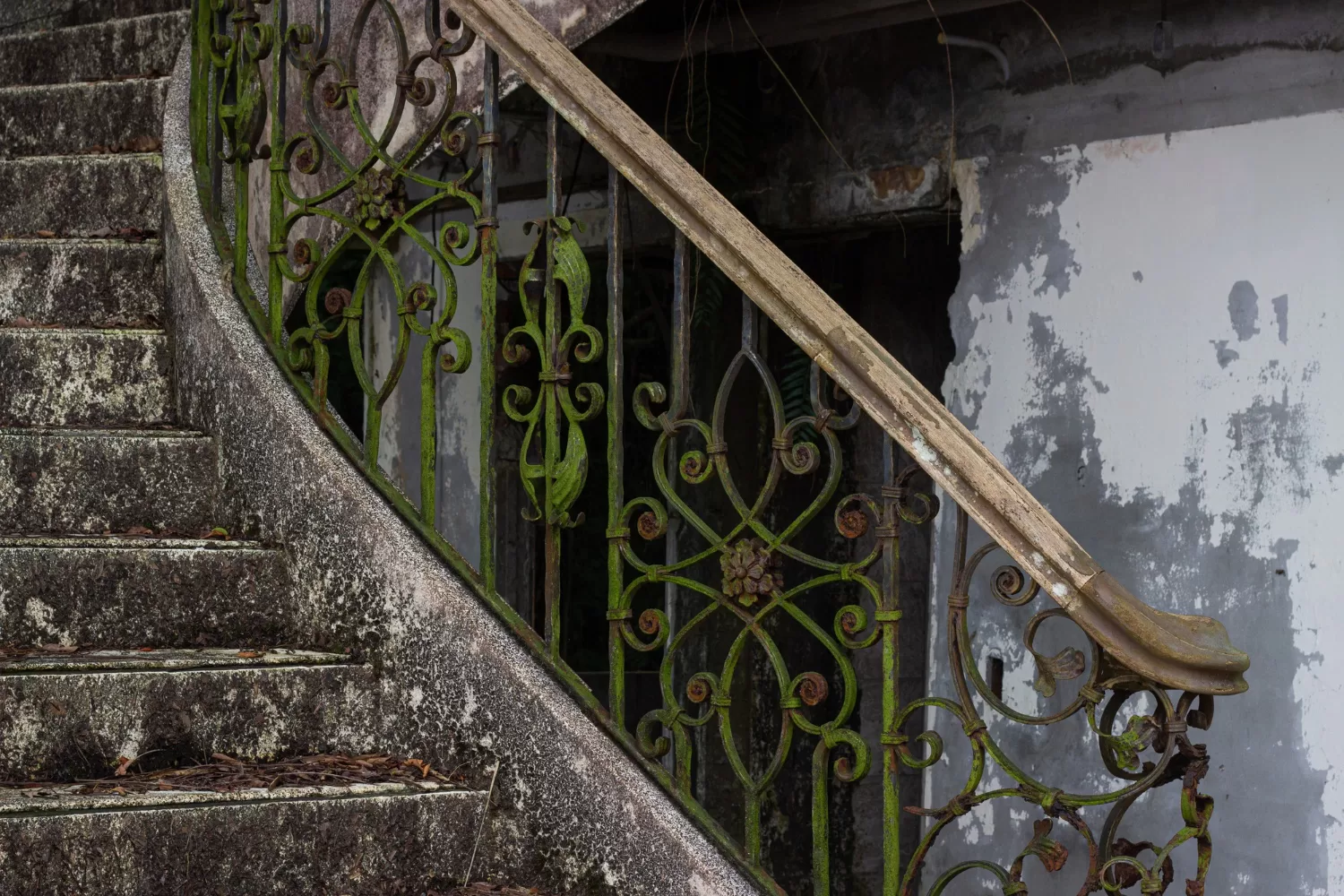Rising damp occurs when water from the ground rises and spreads through the walls of a building by way of capillary action. It enters through small gaps and holes in porous building materials such as brick and stone. This form of damp is commonly found in older buildings, built without proper damp proofing. However, modern buildings are equally at risk where the damp-proof course is damaged or wasn’t properly installed.
Rising damp, if left untreated, can have grave impacts on a property and its residents. Not only will it ruin the building’s appearance by damaging wall furnishings, it can also be the source of serious health issues and structural defects. All of which can be comparatively more expensive to rectify than installing a new damp proof course.
Therefore, it’s better to detect the early signs of damp, as soon as possible. Here are ten of the most common signs of rising damp.
1. Tidemarks
One of the first signs to look for if you suspect that your home has rising damp is tidemarks. The groundwater absorbed by the walls of your home is rich in salts. When the water evaporates, these salts remain and stain the walls, creating tidemarks. This sign of rising damp will only be found on the ground floor of buildings. Furthermore, they don’t span higher than one metre above the floor. Finding tidemarks on upper levels of a building or above one metre from the ground are likely indicators of other types of damp, such as penetrative damp.
2. Damp Patches
Damp patches are another sign of damp in walls to pay close attention to. However, this can be difficult given that damp patches exhibit similar characteristics to tidemarks. Much like tidemarks, damp patches are located near the ground, and rise to one metre in height. They stain dark yellow or brown as a result of the salts found in groundwater.
However, unlike tidemarks, damp patches will be moist to the touch whereas tidemarks are a dried stain on the wall. Finding either damp patches or tidemarks are signs of dampness that should not be ignored. However, being able to differentiate between the two can help to locate the source and determine how long the problem has been ongoing.
3. Peeling Wallpaper or Paint
Rising damp involves water moving upwards through walls. Thus, the walls of the home or commercial property are where the first signs of damp will be seen. The increased moisture will cause wallpaper or paint to start peeling, bubbling, or chipping off the walls. Likewise, your wall coverings may look visibly damp. It’s best to start looking for rising damp signs towards the floor. In this case, bubbling paint or wallpaper curling at the edges near the skirting boards in the room. Yet, peeling wall coverings are not a symptom of rising damp alone. Which is why it is crucial to hire an expert to determine whether the property is suffering from any or all forms of damp.
4. Rotting Skirting Boards
The previous rising damp sign discussed paint and wallpaper stripping from around the skirting board. However, the skirting board itself is also an indicator of rising damp. Because it lines your entire home and provides a base for the interior, it will bear the brunt of rising damp before it starts to affect the paint or wallpaper. In time, the moist wood can develop fungus and lead to dry rot throughout the building. If left untreated, the wood will start to decay.
Skirting boards serve a cosmetic purpose, rather than a structural one. Therefore, it’s easy to ignore this sign of damp. However, rotting wood is unsightly on interior decoration and expensive to fix. Moreover, if the fungus spreads to other wooden parts of the building, it will not only be expensive but pose a safety hazard, too. Rotting skirting boards are relatively easy to detect, as they appear to be cracking or crumble at the touch. Likewise, if the problem is ongoing, fungus or decay may be visible.
5. Black Mould
Growing fungus on wooden skirting boards is bad, but the tell-tale dark spots of black mould are significantly worse. Typically, black mould is associated with condensation, and can be found in humid rooms such as bathrooms and kitchens. However, based on its location and height, it can also be a symptom of rising damp, penetrative damp, or a combination of all three. A diagnosis that only a trained professional can give.
Regardless of its cause, this sign of dampness should never be ignored. While black mould is unpleasing to the eye, it has more serious effects beyond the aesthetic. Mould can become airborne and cause serious breathing problems, even in people with no history of respiratory issues. Although smart to thoroughly disinfect any areas growing black mould, it’s important to eliminate the source.
6. Musty Odour
If you find that your property is plagued by a recurring moist and unpleasant smell, you may have been alerted to a damp problem. In fact, musty odour is an early sign of damp, likely smelt before it is seen. Unfortunately, because it can’t be seen, it’s difficult to determine its source without the help of an expert. A musty odour isn’t limited to being a sign of rising damp; rather it can be a combination of factors. It’s also advisable to treat the issue as soon as it presents itself, as airborne mould spores can trigger respiratory problems.
7. Formation of White Deposits
Aside from tidemarks and damp patches, salts can give rise to white deposits, which is another prevalent sign of damp. Capillary action spreads groundwater, containing salts, throughout the walls of a building. The salts are hygroscopic, therefore they absorb water from the air and retain it. This results in walls retaining moisture. However, when the water evaporates, the salts migrate towards the surface of the walls and appear as white deposits. On masonry like brick and stone, this phenomenon is known as efflorescence, although it’s possible for white deposits to form on plaster as well.
8. Bubbling or Flaking Plaster
Similar to wallpaper and paint, plaster is a telling sign of damp on walls. Damp increases the moisture found in walls, and the excessive water will weaken the plaster and cause bubbling and flaking. Damp is the likely source if you find that plaster on the wall is powdery or crumbles easily between your fingers, or that there is an excess of plaster on the floor.
Where the bubbling and flaking plaster is taking place will indicate the type of damp affecting the property, as rising damp only affects the ground floor and no higher than one metre from the ground. Bubbling or flaking plaster is cosmetically displeasing. If left untreated, replastering the walls of your property can prove to be expensive.
9. Rusted Fasteners
This sign of damp would only be apparent if the property has exposed metal fasteners, such as screws, bolts, and nails. Rust occurs when metals such as iron and steel are exposed to water and oxygen, causing oxidation. If the property is suffering from damp, the walls contain excessive moisture, which will spread to the fasteners that are also in the walls. If these fasteners are exposed, they are also in contact with the air and rust is likely to occur.
Rusted fasteners are a sign of damp in general, not specifically rising damp. Therefore, a professional will have to diagnose the source of the damp. It’s very important to address both the rusted fasteners as well as the source of damp as soon as they become apparent. Rust degrades metal, therefore the fasteners may become less effective over time and compromise the safety of the building.
10. Corroded Bricks and Mortar
As durable as brick and stone are as building materials, they are not immune to damp. Their deterioration is a rising damp sign. Rising damp occurs when water travels through the pores of these materials. When exposed to excess groundwater, brick and stone start to corrode. At the same time, the groundwater and the salts it contains can cause mortar to weaken and crumble. Corroded brick and mortar will negatively impact the structural integrity of a building. Despite being a sign of rising damp it can also cause other forms of damp, as the loosened brick and mortar can allow water to enter from any part of the building, exacerbating the problem. Corroded brick and mortar are easily identifiable by observation. It’s advisable to contact a damp expert and mason, so that the material can be replaced and the source of rising damp eliminated.
The damage caused by rising damp, if left unrecognised or unaddressed, can cause severe harm to the health and safety of a property’s occupants, the finances of the property’s owners, and the cosmetic or structural appearance of the property itself. Hence, it’s critical to recognise and rectify rising damp as soon as possible.
If any of these signs are affecting your property, then we strongly recommend damp proofing as soon as possible to prevent any further damage. Contact CS Damp Proofing on 01765 804050 or fill in our online form to arrange a site survey and have our team of trained professionals protect your property from rising damp.

